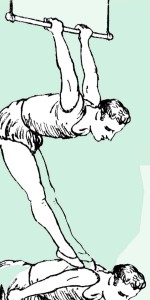 Laura Allen recently blogged about the reasons why some practitioners have a difficult time getting repeat customers. One section mentioned how some practitioners try to sell energy work or other non-massage techniques to people who think they are buying massage.
Laura Allen recently blogged about the reasons why some practitioners have a difficult time getting repeat customers. One section mentioned how some practitioners try to sell energy work or other non-massage techniques to people who think they are buying massage.
That reminded me that one question rarely addressed by massage schools and the profession as a whole is the ranking of the commercial viability of various approaches or techniques in massage.
Here is a list of some obvious hierarchies here that, when addressed realistically can contribute to success.
- More people would prefer to lay on a table than on the floor when getting a massage.
- More people are looking for simple relaxation/stress reduction/circulation massage than a treatment for a particular condition.
- More customers are able to pay $15 for a chair massage than $75 for a table massage. As Massage Envy and the thousands of Chinese immigrants in malls across the country have irrefutably demonstrated, massage consumers are highly price sensitive.
- Rolfing, Trager, Feldenkrais, and Rosen work (to name a few brand-name styles of bodywork I love) have, typically, far smaller potential audiences than more generic approaches to massage like Swedish or acupressure.
- There are more potential customers of massage then there are clients. There are more potential clients of massage then there are patients. Choose your language and intention carefully.
- And, yes, when people pay for a massage, they don’t expect long periods when they are not being touched or the hands touching them are not moving.
To be absolutely clear, I am not ranking one approach to massage as “better” than another. I, personally, love them all. I am simply noting how markets for massages services narrow or broaden depending upon certain characteristics. Schools do not do their students any favors by pretending that all approaches are equal in this regard nor by pretending that the more approaches they teach the more successful their graduates will be.
Any other additions to this list?




100% agree
Great thoughts! Although in my case number two is the opposite and it’s the reason my practice is booming.
• They want a clean, professional and attractive environment.
• They don’t want to see your boom box in the corner on the floor
• They like it when they can hang their clean clothes on hooks or hangers instead of on the floor!
It may seem like the basics, but when I started covering these and others as a teacher, you could see the jaws drop.
I agree with Kenny in that your second point has gone exactly the opposite for me and my practice. However I know, that in the general population, it is the way things have been. I have been reading your blog entries for the first time today and I am grateful that there is someone out there telling the truth for a change. I had a subscription to the different massage magazines and got tired of hearing the same boring stories and marketing strategies over and over again. I would read them and say there is no way that someone can do this realistically in their private practice. Also, it seemed that every month there was a new fad about some modality that was usually a watered-down version of some other modality.
I also would like to thank Laura Allen for her article and adding “Personal Hygenie” to the list of complaints from clients. Why do these people think it is OK to dress like a dirty hippie and think that people will want them to be their therapist? I have a few students I have had to tell to clean themselves up before even coming to class, and one student who went to an interview at a place I was working and the owner observed that his appearance was “askew and unprofessional.” Is it much to ask to wash yourself, comb your hair, and put on some decent clothing? Especially during an interview!!! I hope the people who need your advice will actually read it and take it to heart. There are way too many therapists in the industry that want to work, have great skills and look professional to give a job to someone who looks “askew and unprofessional.”
Thanks for your great comments, Kenny and Manuel. I appreciate the fact that both of you highlighted your success with massage as treatment. I will never argue that massage therapy is not important nor lucrative. My point is merely that the pool for people who need and are willing to pay for massage therapy/treatment is far smaller than the pool of people who need massage as stress reduction/relaxation, at least according to the latest published AMTA/ABMP surveys.
I’d like to attract more of the pool you refer to David, but there seems to less loyalty in that group. At least in my area, they tend to be the coupon hunters and have little interest (need?) in establishing a rapport with their massage therapist.
Great blog!
My experience is that people say they want relaxation/stress reduction, but often ask for treatment work in addition. Most people have some physical issue, such as a whip lash injury from a car accident, sciatica, and rotator cuff problems.